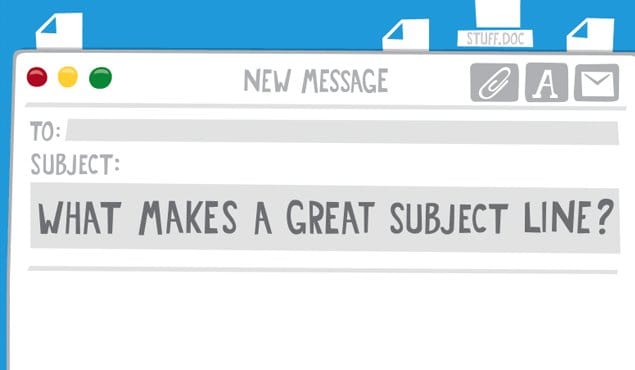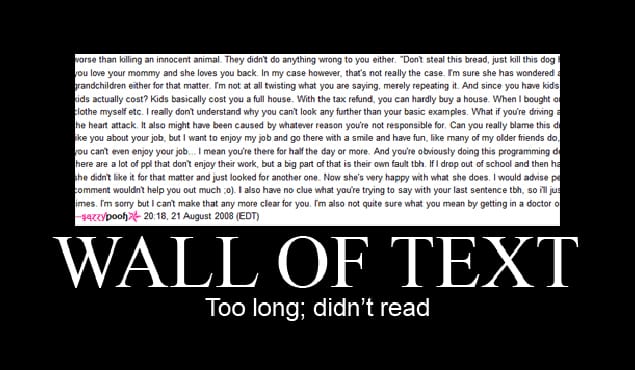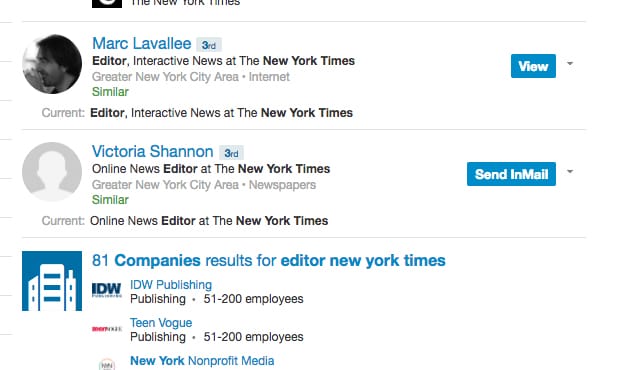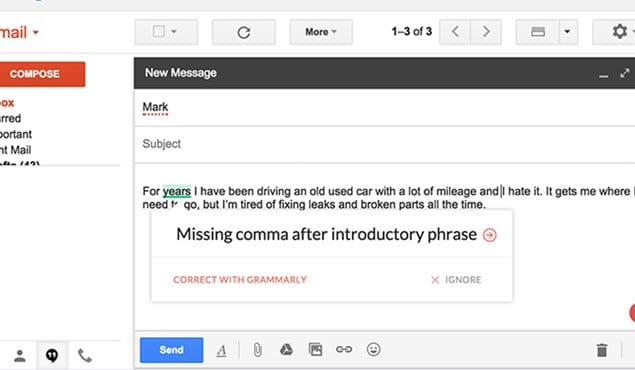“I’d like to get published somewhere other than my own blog,” you think consistently, day in and day out, as you grow your brand or business or expertise in a given niche.
“I want to be one of those contributing authors, those guest posters, I want my name on websites and the glory that comes with connections at media organizations!”
You want the beginnings of what all writers want — some recognition, an audience, and exposure. The somewhat disheartening reality is that the amount of people producing written content for online publication is absurdly high. That is your community, but it’s also your competition.
A Gnarly Statistic
An infographic published by Frac.tl polled 500 of the major media organizations in the world to get a whole host of stats (which I’ll refer to throughout this article), and the one you need to know up front is about just how inundated editors and writers are with pitches.
For instance, 45% of writers only publish one story per day, yet 40% of writers get pitched a minimum of 20 times per day. That’s five-to-seven articles a week that get published, and up to 140 stories to choose from. That’s not even taking into account that many of these writers and editors already have stories queued up, a staff that writes for them and the desire to reach out for stories on their own.

What I’m trying to say is, there’s a lot of noise coming down the electronic gullet of writers and editors in all publications.
This doesn’t mean it’s impossible to get published — quite the opposite, people publish contributors and guest post articles all the time.
It means you need to stand out from the crowd. This is why you’re here, and it’s what I’m going to illustrate for you with words, because I’m a terrible stick-figure artist.
To get an editor to accept and publish your pitch, you’ll need to get them to first open your email, and then respond to it. These are two distinct steps, which I’ll break down in detail below.
How To Get An Editor to Open Your Email
This is the first step if you want to get published. Due to the endless barrage of requests editors and writers get for guest posts, they are more than ready to throw yours in the Spam or Trash folder without a second’s hesitation.
They’ll make this decision based on precisely what they see in their inbox: the subject line, your email address, what channel it came through, and, of course, your article.
Subject Line
This arguably the most important part of getting the editor to open your email. It’s the words you use that will determine if they open it up, which is the only way to get a response.
There are a number of components to think about when crafting a great subject line. The Frac.tl report specifically asked editors what they liked in a subject line (and what made them open it up). The top two results are:
- A content-based subject line that includes the article type. This includes an engaging yet somewhat mysterious content-based sentence, and then what format the article typically takes. If you pitched this article (the one you’re reading) to an editor, it would look like this: “Get That Pitch Answered [How To].”
- A personalized subject line. This includes words like “you”, “we”, and “us”, bringing the editor and the audience into question immediately. You also want it to address the topic of the article, and leave some mystery. An example, based again on the article you’re reading, would be: “Your Email Pitches Answered Every Time [How To].”
The difference between these is very minimal. We’re talking about small word changes that invoke different psychological responses, all aimed at getting that email open. There are companies that do countless hours of research and studies to perfect email marketing — you’re just an individual trying to get a single email open. It’s not easy, but the above methods are the best way to go about it.
Word Count
If there’s one universal truth to the subject line, it’s to keep the word count low. A maximum of 10 words, but 5-10 is what I recommend. You can see the two examples above have 5 and 6 words in the actual pitch, and then the article type in brackets.
The goal here is to keep the visual appearance of your pitch minimal and to show the editor you can explain your topic succinctly.
Do this by using few words. A pitch that reads, “The Best Ways To Pitch an Editor Explained by Industry Insider [Original Study and How To]”, is just too long and clunky.
What Not To Do
If there’s one other universal truth for subject line creation, it’s to stay far away from directly talking to the editor. You want to pitch the article in the subject line, not the fact that you are pitching.
A common example I see in my inbox all the time is, “I thought You Might Like This”. Ugh. Another example, “This Topic On Your Site? Original Content.” Oy.
These are terrible, tell an editor nothing about the topic, and scream “robot” in a high pitched wail.
With that said, for certain types of publications I’m a fan of somehow implying it’s a guest post or contributing author request. If a publication has a specific email address for these queriers, don’t use this. But if you’re emailing one person who has to sort through a ton of emails, some of which are pitches, some of which are not, it’s nice to include the fact that the email is a guest post in the subject line in brackets, like this:
“How To Get That Pitch Answered [Guest Post]”
This tells an editor the subject, is fairly clear, and shows it’s a guest post pitch.
Some would recommend against doing this because the goal is for the editor to open the email due to curiosity. Some say if the editor knows it’s a guest post they will be more likely to pass.
I agree with this for certain publications. This has to do with doing your research on a publisher before emailing them — know your audience and make the call on whether or not the editor will want more information and clarity on your position, or if you need to lure them into the email.
Use a Legitimate Email Address
Beyond the all-important subject line is one other little detail: the email address you’re sending your email from. In most email programs — be they Gmail in a web browser or Outlook — you can typically scroll over the “sender” area to see a name and email address.
I can’t tell you how many pitch emails I’ve gotten from a very strange looking address.
If the name of the sender is “John Smith”, but the email address is “[email protected]”, you’re going to get sent to the trash or spam folder, guaranteed.
You should have either an email address that is the same as your name, your initials, or corresponds to your business. If you don’t have a business a standard email account is fine, like @gmail.com, but it looks better if your email has some sort of business or website association.
Use the Correct Email Channel
This, again, has to do with research. Make sure you’re emailing the correct person, in the correct channel.
Editors at larger institutions typically have more than one channel and/or email address:
- Their work email address. Includes their name and the company they work for.
- A generic email address that people are supposed to use for pitches.
- More generic email addresses for other types of contacts, like PR or media inquiries.
Often the second and third addresses will get forwarded to that first email address, and that’s who you’ll get a response from. That said, make sure you are sending it to the right channel. It shows you’ve done research.
Pitch in the morning
One last little note about the pitch. Do it in the morning. That Frac.tl study found most people prefer to receive a pitch email in the morning, before noon.
If you write late at night use an automated email scheduling/reminder service, like Boomerang, and schedule your emails.
How to Get an Editor to Reply to Your Email
You’ve gotten the editor to open your email. Congratulations. The inside must be as well-crafted as the subject line was to get a response, so be prepared to put in the work.
Address Them by Name
The first major fault in every guest pitch email? The “Dear Editor” intro.
Bam, right in the trash.
If you haven’t taken the time to know the name of the person you’re emailing, you do not have the right to write for that publication.
This is a serious pet peeve among editors far and wide, so take note. Address them by name.
Build a Relationship
Tacking onto the above advice, you’ll also want to build a relationship with the editor. Knowing their name is part of that, but you need to go further.
The Frac.tl report shows that 64% of writers and editors believe you should establish a personal connection before pitching, which is a serious majority.
This means interacting on social networks, commenting on blog posts, or getting in touch some other way. Do this before you send your pitch. Like, a week or two before. Get on their radar so that when they receive an email (with your name on it), you won’t be a complete blank to them.
Then, continue this relationship building by referencing something about your connection in the email itself.
If you start off with both their name and a connection to them, you will have justified yourself as an engaged human, and engaged humans are typically capable of writing great articles.
Do Your Research
This step actually applies to both the subject line creation and the body of the email. The best way to get a response from an editor is to pitch them something in their line of work. Don’t ask if they “have interest” in a piece, because you should only be sending them a pitch they are interested in.
You get to know what they are interested in by reading what they write and publish. This is essentially common sense, but many people don’t do it.
Doing research also reduces the robot factor in guest pitches — show you’re a human by doing human-based research on the person you are emailing, and on the subject that person writes about.
Keep It Short
Don’t write a novel in your email pitch. A connection, your topic ideas, and who you are is enough for an editor to make the decision to email you back. Aim for under 200 words.
Likewise, don’t send a completed article. You might think that implies you’re ahead of the game, a hard worker, and have made their job “easy,” but in truth it’s arrogant and shows you’ve never worked collaboratively with an editor for publication.
That said, make sure you follow the blog’s or publisher’s guidelines for pitch emails. Some of them want a completed article, some of them don’t. Some blogs get very specific, some have no rules. If they have rules, follow them exactly, to a tee.
Spell Check Your Email
One of the biggest annoyances an editor will face is opening an interesting pitch email to find spelling errors, typos and language that doesn’t make sense.
Write your email as well as your article. Proofread your email. Use a spell checker. Do not send something with a typo, because it shows you are unprofessional in your approach.
No Marketing Speech
The last major piece of advice in this article is to stay away from marketing speech. This means you shouldn’t include any language that oversells your article idea.
Provide facts, provide context, provide insight on the impact for their readers, but don’t do it in a spammy way.
Some words you shouldn’t use:
- Revolutionary
- Life Changing
- Dramatic
- Stunning
- Incredible
- Mind Blowing
- Best
Along these lines, never use ALL CAPS IN ANY PART OF YOUR EMAIL PITCH.
If I had done that for one more word you would have left this article in a huff. Editors hate caps and other strange writing techniques.
Be straightforward, clear, and use the written word in an appropriate way.
Send with Confidence
Following the advice I doled out here will get you so much closer to getting your pitch opened, and then replied to. Remember that following these steps should provide you with a good deal of confidence. Not that you’ll automatically get published, but that you represented yourself well, and will likely receive a response.
If you’ve done all this and don’t receive a response, make sure to follow up with the editor. You’ve put in the work, and deserve a response.
 ContentPowered.com
ContentPowered.com











Geet Bathla
says:How much time should I wait to write a follow up email to magazines like Time?